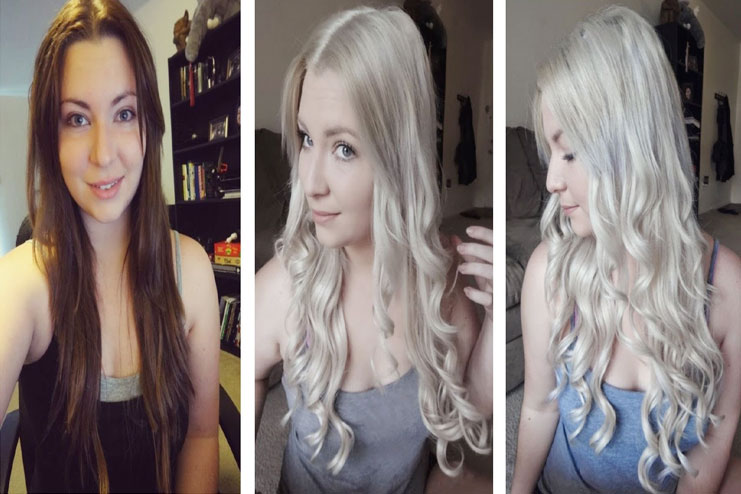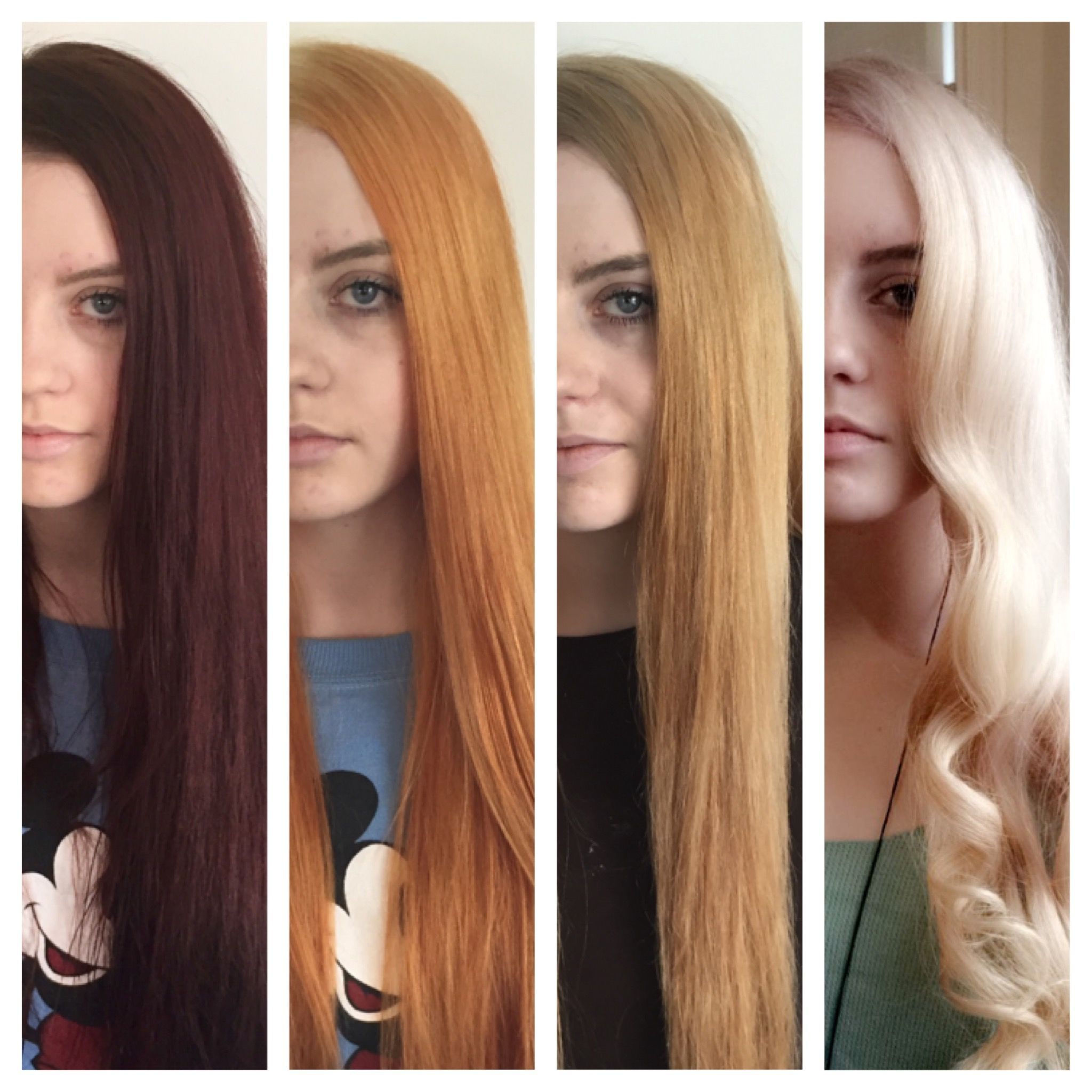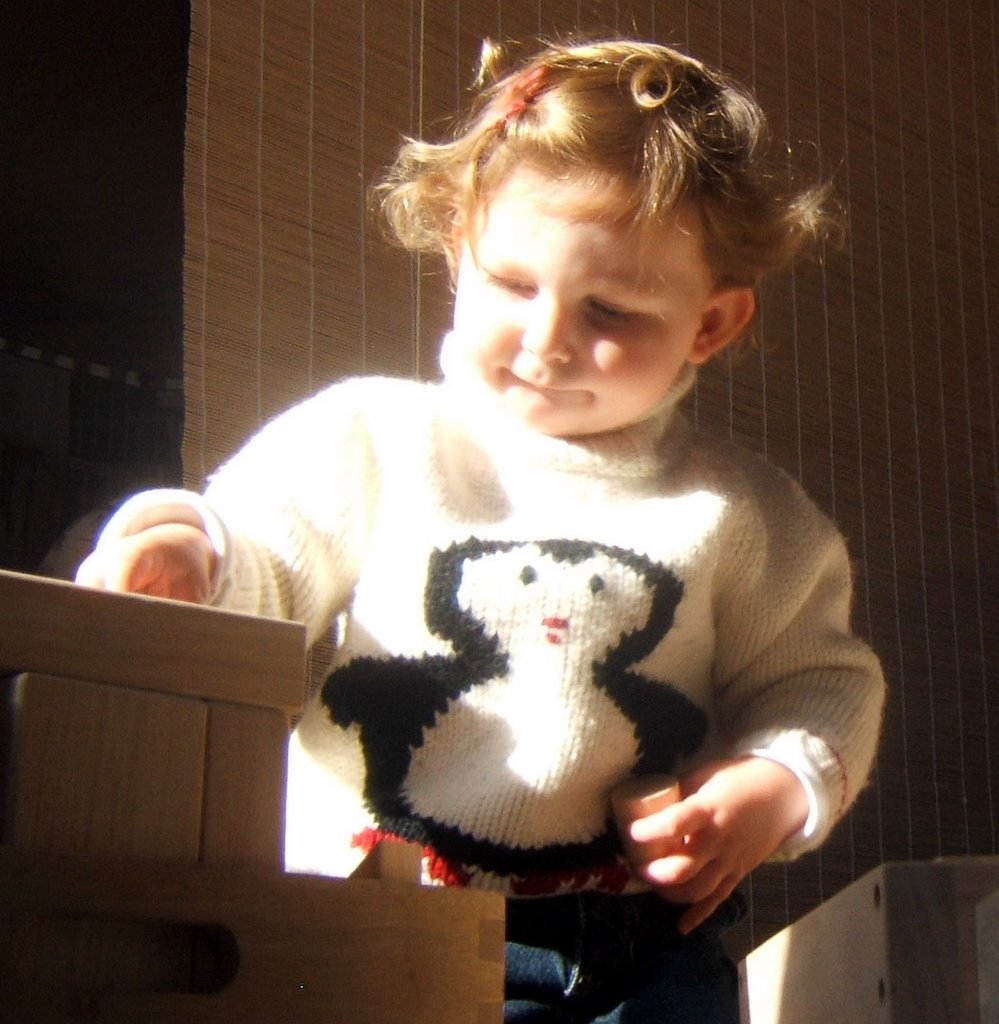Table Of Content

Melanie Rud is a Chicago-based writer with 10 years of experience covering beauty. She covers all things skincare for Byrdie, from ingredients to acne advice. So, when keratins break, the hair strands lose their structural integrity and become brittle. While the sight of overgrown roots may be bothering you, for now, it's better than the damage you may cause by trying your hand at a bleach job. Due to the spread of COVID-19, salons across the country have closed, and many have taken their hair into their own hands at home — literally.
What Do We Mean by Lift?
If you're going platinum blonde, you'll need a bleach that offers the maximum number of lift levels (nine), as well as ingredients that protect the hair fibers. Amino acid L-arginine helps fortify your hair and make it more elastic while a bond-building formula reduces the risk of damage. This decolorizer also contains bluish anti-yellowing pigments to achieve that ultra-cool platinum finish. "Choosing the best lightener and developer is challenging," says color specialist Jodana Geary. "And you may end up with an unwanted result that compromises the condition of your hair." Additionally, the lighteners used at salons are of a different caliber than what you find on a drugstore shelf. "Pro bleaching products typically have more lifting power to them," explains celebrity colorist Matt Rez.
Step 10: Invest in a purple shampoo/mask
The recommended developer strength would be 20 or 30 volume such as L’Oreal Oreor. The inclusion of succinic acid is at the heart of the advanced bonding system. The acid is a patented ingredient that forms bridges in the hair structure, resulting in healthier, less damaged hair. This is very important, as cysteine bridges are broken during the oxidation, resulting in weakened and brittle hair. The Manic Panic bleach kit is the most popular option among at-home-bleachers, and for a good reason. The company has been creating cruelty-free, vegan products since the late 70s.
You’ll need patience
Walker advises starting your bleach application about 1cm away from the scalp and leaving your roots uncovered until the very end. (Your roots develop more quickly than any other area due to heat from the scalp). The modern swing toward natural beauty started in the late 1920s, with actress Louise Brooks and her shiny black bob.
Greasy hair is the recommended hair condition for bleaching, as your hair’s natural oils are well-equipped to resist the bleaching process, and protect the scalp from chemical damage. We recommend bleaching hair at least 72 hours post-hair wash for ultimate protection. If you find your strands breaking more after bleaching, you could use products with bis-aminopropyl diglycol dimaleate and ceramides, which are known to restore the health of bleached hair. In case the chemical has come in contact with your eyes, wash your eyes with lots of water for at least 15 minutes. If you find that you have accidentally swallowed the bleach, don't induce vomiting unless suggested by a healthcare expert.
For starters, choose a well-ventilated area for your hair-lightening session. When you have this ready, put on the gloves and mix the lightener and developer as the instructions say. Also, remember that bleach works best on virgin, unprocessed hair, as previously colored hair may lift patchy. Thus, avoid dyeing your hair for at least three months before bleaching if you can or let the professional on the job. In the end, if you're unhappy with the results, make an appointment with your colorist.
Why Josh Hutcherson Went Bleach Blonde For The Beekeeper, Despite Swearing He'd Never Do It Again After The ... - CinemaBlend
Why Josh Hutcherson Went Bleach Blonde For The Beekeeper, Despite Swearing He'd Never Do It Again After The ....
Posted: Fri, 12 Jan 2024 08:00:00 GMT [source]
Step 8: Toner (Optional)
Minimize use of chemicals and heat, and maximize use of moisturizing and protein-boosting treatments. You will want to treat your hair especially well in the weeks before you dye. Color-safe shampoos and conditioners are essential in extending the life of your bleached hair color.
Valles typically looks at the hair to make sure it’s not too dry, overly chemically-treated, and doesn't have a ton of split ends. One way to prevent damage is to bleach just your roots instead of your whole head. "The roots are virgin hair that has not been chemically-treated," she explains. If you've never chemically-treated or colored your hair, consider yourself lucky; you have a better chance of not damaging your hair if you decide to do a DIY bleach job. Manage your expectations, and do your research to determine whether your desired shade is even possible. “You must be realistic about what shades can be achieved without compromising the integrity of the hair,” Jackie Vessey, stylist at Fisher Experience Salon and Spa in Braintree, MA, says.

Sophie Davies-Hair Stylist & Master Hair Colorist

Before placing bleach all over the hair, Dorram says to strip-test a small piece of hair below the ear. "Leave the bleach on for the time instructed, and make sure you like the results." She recommends doing the same with toner. Because bleach works best on virgin, or unprocessed, hair, experts recommend not processing your hair for at least three months before bleaching it. Your hair is more susceptible to damage if you dye it and undergo intense hair treatments, like straightening treatments, then immediately bleach it.
Good Housekeeping participates in various affiliate marketing programs, which means we may get paid commissions on editorially chosen products purchased through our links to retailer sites.
Remember that DIY hair lightening is okay only if you have healthy hair, understand the basic color science, and carefully follow the guidelines. Otherwise, you can end up with blotchy color and some serious hair damage. So, if you’re currently experiencing issues such as frizziness, dryness, and breakage, it’s highly recommended to leave the bleach job to a hair stylist or professional colorist. Going from dark brown to lighter strands is a high-impact transition, and this is about both your hair condition and your new look. Even without major lifting, bleach treatment often results in a dry and rough texture, and brassy tones start to creep in soon.
Using bleach and a developer that is too strong for your hair has a chance of literally melting your hair off. As mentioned before, do a strand test to ensure that your hair will be fine with the chosen bleach and developer, and you can continue with the peace of mind that your hair will turn out gorgeous. Before you start you should brush your hair to get out any tangles and knots. Don’t scrub at the scalp with the brush though as this will cause damage to the scalp, and once the bleach is applied it will burn. It’s very popular among women with black hair, where milder bleaches won’t do the job nearly as well.
Before bleaching your hair, you should pay a visit to your dermatologist and ask to do a “patch test” to see how your skin reacts to bleach. Reconsider bleaching your hair if you have dermatitis, psoriasis, eczema, a scalp condition, or any type of allergic reaction to the patch test. Once you are done with the bottom sections, undo the section you secured away and start applying. As soon as all of your hair is covered in the bleach, cover it with a shower cap or a plastic bag. As soon as all of your hair is covered in the bleach, cover your hair with a shower cap or a plastic bag.
This is a medium-strength bleach, lifting up to 7 levels in one session. The weaker strength, as compared to BlondMe or BW2, means less damage to the hair, which is important considering the lack of care ingredients. Overall this is a formula that will lighten your hair while minimizing the damage, and doing it for less cash than some of the competitors.
Use it once a week to enhance your tone or when your color-treated hair starts to fade. Take your pick from 15 shades, including a clear option that works on every hair hue. A deep conditioning mask can target common signs of bleach-induced hair damage like dryness, split ends, and breakage. Plus, many of these treatments aim to strengthen hair and shield it from future damage. Try L’Oréal Paris Elvive Total Repair 5 Power Restore Multi-Use Treatment.

No comments:
Post a Comment